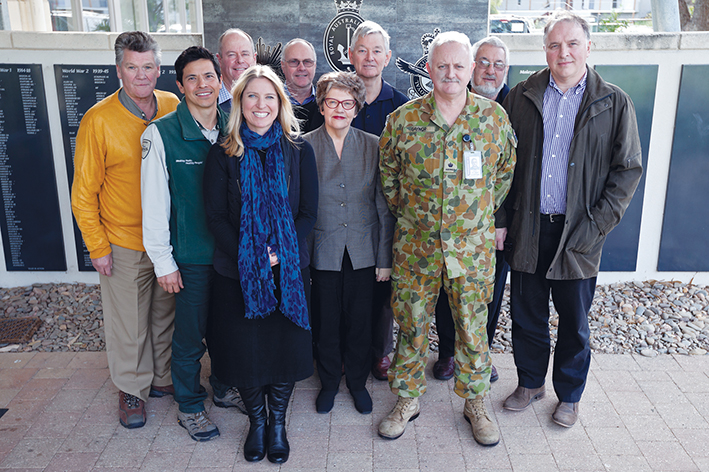
THE situation could not have been more exciting for the gunners at Fort Nepean – or those on the German merchant ship steaming for The Heads – on the first day of the war in 1914.
Hostilities had been declared officially three hours and forty-five minutes before the Pfalz made her run for it, hoping to escape to open sea before her new enemy could intern her.
But it was not to be: the gunners aimed well and a six-inch shell from gun emplacement number six roared into the water only a short distance from Pfalz and the Australian pilot innocently guiding her towards freedom – a Capt. Robinson – talked the anxious German captain into surrendering.
It’s a fair bet that none of the gunners would have had any idea then how irrevocably the world had changed, even as the echoes of the shot reverberated through the remote coastal artillery fortification.
It was the first shot fired in anger throughout the entire British Empire on the first day of the First World War. It was the first of all the hundreds of millions of rounds of all calibres subsequently fired over the next four years and four months until hostilities ceased on 11 November 1918.
We were in it for the long haul …
Organiser Bernie Gaynor, a major in the Royal Australian Army artillery – who I in charge of upcoming celebrations to commemorate the event – proudly reports that the young Australian servicemen guarding the fort all those years ago were professional, well trained and ready for action even in those early moments of war. “They behaved as they should have and prevented the escape of an enemy ship. War had been declared at 11pm London time on August 4 which was 9am on August 5 here. Yet, a little over three hours later, they were able to stop the Pfalz and have her returned to port.”
The armoured gun placements along the shore had been built in stages from the 1860s, when the threat of a Russian invasion loomed large over the new colony. They were a work in progress until 1910-11 when seven of the newest six-inch guns – common in defences throughout the Empire – were installed to defend the bay. Two each went to Fort Nepean and Fort Pierce and three to Queenscliff.
Major Gaynor said the gunners had to be careful with their aim, as a long shot could have hit Swan Island – and people – on the other side of the bay. They waited patiently until the ship turned to make her run towards the Heads and fired, impacting the water a short distance from her stern. Their intent was clear, the danger imminent.
Hearing the shot on the bridge, Capt. Robinson ordered the ship to stop and was “involved in a brief tussle” with the German captain until common sense prevailed. The Germans knew they could not outrun the guns. Their war was over.
Now, 100 years later, Point Nepean will once again echo to the sound of artillery fire when the Governor of Victoria, Alex Chernov, and other distinguished guests gather at the former Officer Cadet School Parade Ground at Point Nepean to commemorate the significance of that first shot. Around 5000 people are expected to attend the free event on Tuesday 5 August – and volunteers are urged to register with the organising committee so they can lend a hand.
Last week it was confirmed that the federal and state governments and Mornington Peninsula Shire would fund the celebrations which are being organised by the First Shot Committee. The federal government has committed $10,000 through its Anzac Centenary Community Grants program. The shire council will contribute $20,000. The Federation Guard and RAN Band will add military pomp and precision.
Planning is well under way with committee meetings being held fortnightly. On board are representatives of the Department of Premier and Cabinet, Parks Victoria, the Army and the RSL. Sorrento-Portsea RSL president John Prentice said club members were “enthusiastically supporting” the anniversary.
The First Shot Commemorations will be open to the public from 11am–1.30pm. They will include the firing of an artillery howitzer, and visitors can view the site of the first shot and experience the enhanced interpretation facilities. Visitors will be able to travel from the Quarantine Station to Fort Nepean by free shuttle bus from noon.
Spaces are limited so those planning to attend are encouraged to register at the event’s website: www.thefirstshot.com.au
“We’ve been intensively planning for the event,” Major Gaynor said. “The committee is working well together and we are enjoying the project. It’s a unique moment in the history of the First World War – and Victoria.”
Volunteers should phone John Prentice on 0412513457 or Michael Jefferson on 0438591946.


